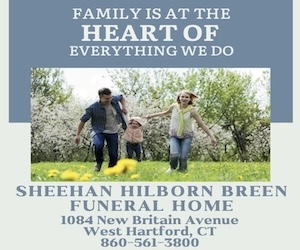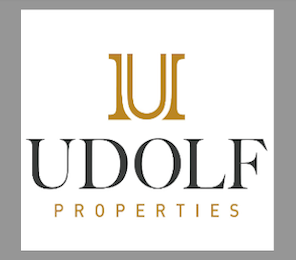There’s a good chance you already know Gary Rosenthal’s work. The sculptor’s signature metal-and-glass menorahs, tzedakah boxes, and candlesticks are stocked in nearly every Judaica gift shop across the U.S. and on many Jewish holiday tables, as well as in private collections and fine-art galleries, and the gift shops of several prominent American museums.
The founder and director of The Gary Rosenthal Collection will be the featured artist at the 10th annual Jewish Arts & Film Festival of Fairfield County, presented by the Stamford Jewish Community Center (JCC). An exhibition of his work will be on display at the JCC from Oct. 29 through Nov. 13. On Sunday, Nov. 6, he will lead a multi-generational menorah workshop and give a presentation on his art.

"I feel lucky that, as my art developed and I developed a following and started to earn a living from selling my art, it gave me a platform for the social activism." - Gary Rosenthal
Rosenthal may be among the most recognized Judaica artists working today. His tzedakah boxes and menorahs have been presented to Presidents Carter, Clinton, and Bush pater, and to celebrities Bette Midler, John Travolta, Tony Randall, and Itzhak Perlman.
But it is his community involvement and tikkun olam that he hopes to be remembered for. Since 2004, he has focused on turning his business into what he has called “a community-service machine based on art.”
“I’ve always been interested in tikkun olam, since I was in college,” Rosenthal says. “I think of myself as a social activist who happens to be a sculptor. I feel lucky that, as my art developed and I developed a following and started to earn a living from selling my art, it gave me a platform for the social activism.”
Rosenthal didn’t aspire to become a professional artist until 1974, his junior year at Cornell, when he dropped out and worked in his father’s used-stove repair shop in Maryland, outside Washington D.C. That’s when he first used a welding torch, fusing stove grates back together. As an artist, fire would become his main tool. Rosenthal returned to Cornell to complete his BS in industrial and labor relations, and later earned an MBA from the University of Virginia.
Rosenthal started creating Judaica in the late ‘70s, when a customer approached his booth at a JCC art show in Baltimore, complaining that she couldn’t find any contemporary menorahs. Rosenthal went back to his studio and created one, which sold right away, and immediately got requests for more.
“When I got started, there were not many people making contemporary Jewish art, so the goal I had was to make a piece of functional Judaica beautiful enough to leave out year-round,” he says. “As I became more successful, I thought of other things that were important to me – tzedakah projects. The business has been built on Jewish ruach, both religious spirit and tikkun olam.”
Rosenthal has created several programs to advance his social activism. He is CEO of Art as a Catalyst, an organization he created in 2003 that works to empower special-needs groups through training and employment, and uses art to raise awareness and money for good works. Through Art as a Catalyst, Rosenthal hired two autistic employees to create items for his Woven Collection of Judaica.
Even as a student in industrial and labor relations at Cornell, he sought to find ways to work with employees with special needs. In 1977, he tried to turn his papermaking hobby into a greeting-card operation, hiring special-needs staff. While the enterprise did not pan out, he always hoped to find a way to use art as a tool of empowerment.
In 2005, Rosenthal launched the Hiddur Mitzvah Project. Dashka Roth, who owns a gallery on Church Street in New Orleans that sells his work, had lost her home in the West Lakeshore district of the city, and Rosenthal wanted to find a way to help her and others who had suffered. “Hiddur means the beautification or the aesthetics of a mitzvah,” he says. “We invited the national Jewish community to help out by buying Hiddur Mitzvah kits containing materials to create menorahs. People bought the kits and donated the menorahs they made, and we donated the money. We had a wonderful Chanukah party at the New Orleans JCC after Hurricane Katrina, with 1,000 donated menorahs and dreidels. The project engaged 20 Jewish communities all along the East Coast and out to California. I was able to leverage my Jewish art and we attracted those numbers of people to make art in order to do good.”
In May, Rosenthal announced the creation of the National Hiddur Mitzvah Center in Kensington, Md., to support and highlight Jewish art, artists, and art education, and to encourage family mitzvah projects. The Hiddur Mitzvah glass ribbon project is an active supporter of Sharsheret, an organization that works with young Jewish women affected by breast cancer.
“I call the art the ‘Trojan Horse’ for getting people involved in tzedakah activities, because who doesn’t like art?” he says. “When we created the Hiddur Mitzvah project, my ulterior motive was to do family art programming as a way to draw a wider community to get involved, through their children. So, fo
r example, children in Minneapolis create Shabbat candlesticks, and the profit from the activity goes to feed people in Argentina for Shabbat. Families in New Jersey make twin kiddush cups; one goes home and the second one is sent to Israel as a gift for an Ethiopian child’s bar or bat mitzvah.”
Rosenthal says that he often sees a ripple effect in a Hiddur Mitzvah activity. “We’d have 60 or 70 people, 20 families, in a room,” he says. “By the end of the program, when I had a conversation with the children about the importance of hiddur mitzvah – the Jewish component of the program – it would seg
ue into a discussion of tzedakah and how important it is to take care of people in need. I’d see the children looking at their parents, asking, ‘What else can we do?’ and then the father is writing a check for $1,000 to the cause we’re talking about.”
A portion of The Gary Rosenthal Collection’s profits goes into several foundations he set up to feed and educate people, and to fund other artists working with kids. Rosenthal serves on the boards of the Montgomery County Arts and Humanities Council, the Theatre Lab in Washington, D.C., and the Montgomery County (Md.) Corporate Volunteer Council. The Gary Rosenthal Foundation primarily funds non-profits who agree to commission an artist to work with children to create a deliverable product for seniors. He also works with Community Services for Autistic Adults and Children (CSAAC) of Maryland, which places special-needs employees throughout Montgomery County, Md. He has collaborated with many groups, including the Autism Society of America, Linkages to Learning, and the Latin American Youth Center in Maryland and D.C. to create successful social-venture merchandise marketing programs.
But what Rosenthal describes as “the single best idea we’ve ever had” is currently on hold, awaiting sponsorship. To mark the 75th anniversary of Kristallnacht, on Nov. 9, 2013, Rosenthal designed the Kristallnacht Project, that will result in a 600-square-foot glass Kristallnacht Wall and an eternal light. The wall will be made of one-foot-square windows created through Hiddur Mitzvah community events. The resulting 600 windows will represent the six million Jews who perished during the Holocaust. In tandem, Rosenthal has developed the Kristallnacht Project Education Center, with free materials and project ideas for families, synagogues, and Jewish organizations to design their own Kristallnacht programs.
“The nice part about the Kristallnacht Project is putting the shattered windows back together,” Rosenthal says. “It’s a gesture of looking forward, and celebrating the strength and vitality of the Jewish community today while not forgetting the terrible history of the Holocaust. The wall seemed to be a beautiful way to do that.”
Rosenthal has yet to find financial sponsorship or a host location for the wall, though a World Zionist Organization representative recently lobbied the Israeli government to have it erected on Mount Herzl in Jerusalem, overlooking Yad VaShem.
In the meantime, Rosenthal is discussing smaller-scale versions of the project with various communities and hoping to find a way to see the original design come to fruition in two years.
The artist and his work will be showcased at the Stamford JCC, as part of the Jewish Arts & Film Festival of Fairfield County. An exhibition of his Judaic art opens on Saturday, Oct. 29 and will be on display through Nov. 13. On Sunday, Nov. 6, Rosenthal will lead a multi-generational Hiddur Mitzvah menorah workshop and discuss his work. Advance registration is required: www.stamfordjcc.org / (203) 322-7900







 Southern New England Jewish Ledger
Southern New England Jewish Ledger

















